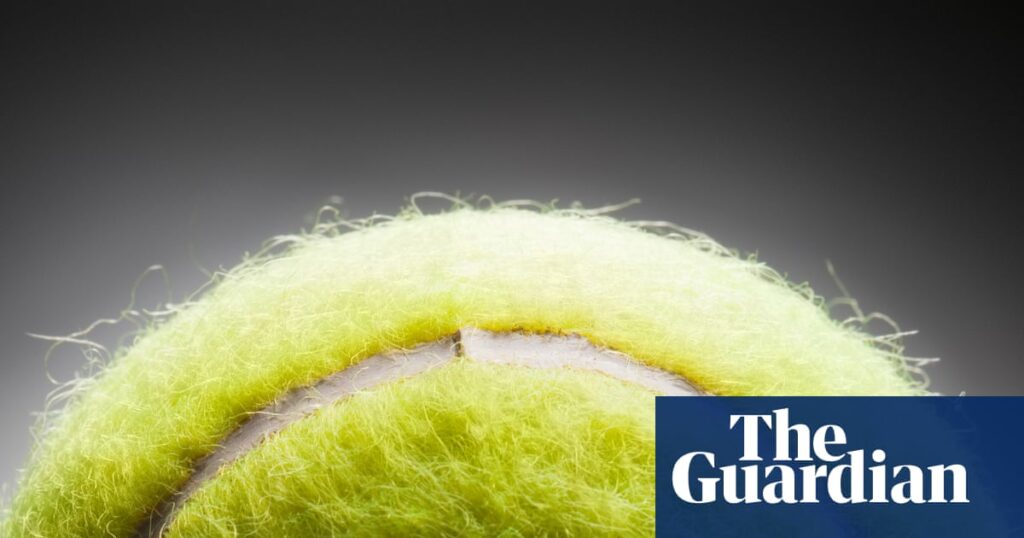It did not take Daniil Medvedev long to realise he was in serious trouble at the French Open. As he tried to find a way past Britain’s Cameron Norrie in the first round, Medvedev simply did not feel comfortable on the ball.
With his prospects of advancing in one of the biggest tournaments in the world dwindling, the 29-year-old settled on a drastic solution. Medvedev requested completely different strings when he sent his rackets for restringing mid-match, switching from a hybrid of natural gut and polyester strings to a full polyester setup.
It is normal for players to alter their string tension during a match, but few would consider a change as dramatic as the actual string type. Medvedev has now made the switch many times this year: “Until 2023 I had never done it,” Medvedev says. “Something started to change on tour, I had to adapt. Now I’m never sure.”
Medvedev is referring to the properties of the tennis balls on tour and how slight changes to their properties in recent years have left him uncertain how to optimise his game. The quality of balls across the tour has been one of the most significant talking points and sources of frustration among players around the world. “That’s probably the biggest difference I can notice, compared to maybe 10, 15 years ago,” Novak Djokovic says. “It’s the balls.”
One of many significant challenges in elite tennis is adjusting to the differing conditions each week, including the constantly changing balls. Different tournaments have their own contracts with ball manufacturers, which presents other issues. Injuries are often attributed to players having to adjust to different types of balls.
There is a growing consensus that many different balls on the tour decay at a faster rate than ever before, which Emma Raducanu describes as difficult to navigate on court and another injury hazard: “I do think the balls are a big challenge for all of us,” says Raducanu. “I think the way that they deteriorate is really challenging. I think it gets very fluffy. You see a lot of wrist, elbow, shoulder injuries happening now. And it is hard because the dynamic of the points can be different from when they’re new to when they’re old.”
New tennis balls are encased in a tight layer of felt but, as they make contact with the racket strings and court surface, it fluffs up, making the balls less aerodynamic and travel through the air more slowly. The balls require more force to move quickly, meaning it is more difficult to generate winners, and fluffier balls lead to more prolonged rallies. Many players believe that they fluff up more quickly and comprehensively today. At least some of these issues can be attributed to production line problems in factories during the Covid-19 pandemic, which affected the consistency and quality of the felt provided by the suppliers to the tennis ball manufacturing companies.
As players try to adjust, the sport itself is changing. Less powerful players such as Norrie now believe it is even more difficult to impose their game with some balls. “I think that the ball’s getting messed up easier in some tournaments,” he says. “For players like me and Daniil, it’s not easy to generate as much as other players, and that’s cost me, or it’s easier for other players. But, to be honest, I’m never complaining about the balls.”
Those who generate significant amounts of topspin have also felt the differences. A livelier ball accentuates the effects of heavy topspin, allowing the ball to bounce higher and rise further outside the opponent’s strike zone. Casper Ruud, who possesses one of the most spin-heavy forehands on the tour, believes his strokes are less potent due to the balls: “I feel like the players are handling my heavy shots like way better now than when I came on tour, which was pre-Covid, and they’re able to just step in and rip the damn thing back and I’m kind of surprised how well people do it.”
Many players have addressed their issues with the balls by incorporating natural gut strings in their rackets alongside polyester strings, which helps to generate more power. Others shift to a looser string tension when they feel they are struggling to generate pace with certain balls. As is often the case in tennis, however, a disadvantage for one player is another player’s asset. None of this has stopped Carlos Alcaraz and Jannik Sinner from dominating the sport this year. Both possess such destructive weapons that they can still generate massive speed off slower balls.
Nobody has been more outspoken on this subject than Medvedev. Two and a half years after holding the No 1 ranking, he is trying to find a way through one of the most difficult periods of his career. Medvedev, who has achieved one of his best results of the year this week by reaching the Shanghai Masters semi-finals, now sits at No 18 in the ATP rankings and he frequently describes the balls as his biggest obstacle.
Medvedev says he does not want to be known as the player “crying” after every match, but he is just being honest: “Some players will like this ball, so I get it,” he says. “I’m crying because it disadvantages me. But if you take six balls out of the new balls out of the can, if you look closely and you bounce them, there are going to be six different balls. I don’t think that’s how it’s supposed to be.”


